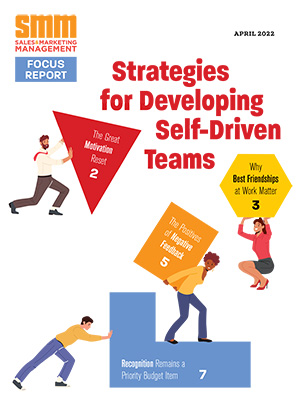Do you expect the same treatment from and interactions with businesses you shop with that you did 10 years ago? Your answer is probably no, and so is your customers’ answer if you ask them the same question.
Customer expectations are evolving faster than ever, partly because of advancing technology. Buyers demand more personalized experiences, quicker responses, instant gratification and seamless interactions across all touchpoints.
For B2B sales teams, meeting similar expectations is no longer an option. Instead, it’s a requirement to stay competitive. To keep pace and potentially exceed customer expectations, you must adapt your sales processes to be more agile, customer-centric and efficient.
Keep reading for strategies to adjust sales workflows to meet changing customer demands and ensure your team remains resilient and capable of delivering exceptional value.
Identifying and Anticipating Customer Expectations
The first step in adapting sales workflows to keep up with customer’s increasing dynamic demands is understanding their shifting needs and preferences. When you know what’s changing in your customers’ lives and why, you can adapt in a way that’s relevant to them and in a way that they recognize.
Use the following techniques to help your sales team stay attuned to customer expectations:
Leverage Data Analysis
Modern sales teams have access to vast amounts of customer data. If your team doesn’t, that’s where you need to start, establishing ways to collect relevant customer data and lots of it.
If you have the data, analyze it to uncover trends, preferences and pain points that inform more effective sales strategies. Organize all your data sources and comb through them one by one.
Tools like CRM platforms and predictive analytics can identify patterns, helping you anticipate customer needs before they arise.
Collect and Act on Customer Feedback
What better way to find out what your customers need in the sales experience than from them personally? Customer feedback is a gold mine for understanding expectations.
Conduct surveys, interviews, focus groups and direct conversations to gather insights into what customers value most, what will improve their experiences, and what will turn them into loyal customers. Integrating this feedback into sales workflows ensures that your team addresses concerns promptly, reinforcing trust and loyalty.
Monitor Market Trends
Keeping an eye on broader industry trends is crucial for staying ahead of customer demands. You can monitor market trends by:
- Reading market reports
- Using tools like Google Trends
- Attending industry conferences
- Regularly reviewing competitor strategies
- Participating in relevant online forums
- Tracking industry-specific conversations on social media using social listening tools
Use these strategies to monitor market trends that help you understand ever-evolving customer expectations, refine your sales approach, and maintain a competitive edge.
Streamlining Sales Workflows for Agility
There may not be anything more important than agility in sales workflows. Thinking, understanding, and moving quickly are critical for responding to customer needs quickly and efficiently. To streamline your sales workflow for agility, implement these actionable tips:
Simplify processes with AI and automation. Integrating AI and automation tools into your workflow can speed up processes and make them more dynamic. Sales automation tools, for example, can handle repetitive tasks, such as follow-up emails, appointment scheduling, and data entry.
Enhance team collaboration. Collaboration tools like shared CRMs, instant messaging platforms, and project management software enable sales teams to work cohesively and share critical real-time updates. This reduces bottlenecks and ensures everyone is aligned in promptly addressing customer needs.
Prioritize time management. Efficient time management is a cornerstone of agile sales workflows. Implementing proven time-management strategies, like setting daily goals, scheduling tasks in advance and delegating tasks to trusted sales team members, can help maximize productivity.
Integrating AI can be a challenge. To do so, you’ll have to identify your AI needs, manage its impact, address workforce concerns, and continue refining and monitoring your AI workflows. Still, it’s worth it, as it can substantially bolster your productivity and prepare your business for the future.
Building Resilience with Future-Proofing Techniques
One thing you can count on is that your customers’ expectations will evolve again and again in the future. So, while adapting to today’s customer expectations is essential, ensuring long-term adaptability is crucial.
You’ll need to build resilience into sales workflows and prepare your team for future shifts in customer behavior. Here’s how future-proofing your business can ensure agility long-term:
Embrace Continuous Learning
Investing in ongoing training helps your team stay informed about emerging technologies, market trends, and best practices. This ensures they can adapt quickly to changes and maintain a competitive edge.
Diversify Sales Strategies
Relying on a single approach can leave your team vulnerable to shifts in customer behavior. By diversifying strategies, from inbound and outbound techniques to leveraging digital channels, you can remain flexible and effective in any market condition.
Plan for Scalability
Scalable workflows can grow with the business, accommodating increased customer demands or new market opportunities. Integrating adaptable tools and processes ensures you can handle future challenges without overhauling your systems.
Proactively Address Potential Risks
Identifying and mitigating risks before they become problems strengthens workflow resilience. From economic shifts to technological disruptions, your team should have contingency plans in place to minimize potential impacts on your operations.
Meeting evolving customer expectations requires more than just minor tweaks to existing processes. It calls for a fundamental shift towards agility, resilience, and customer-centricity in sales workflows.
Start by identifying and anticipating customer needs. Then, based on what you learn, streamline your workflows and implement future-proofing techniques to build a robust framework for sustained success.
Adaptability gives you a competitive advantage. By prioritizing customer-focused strategies and resilient workflows, you can foster long-term customer loyalty and drive growth, even in the face of uncertainty.





